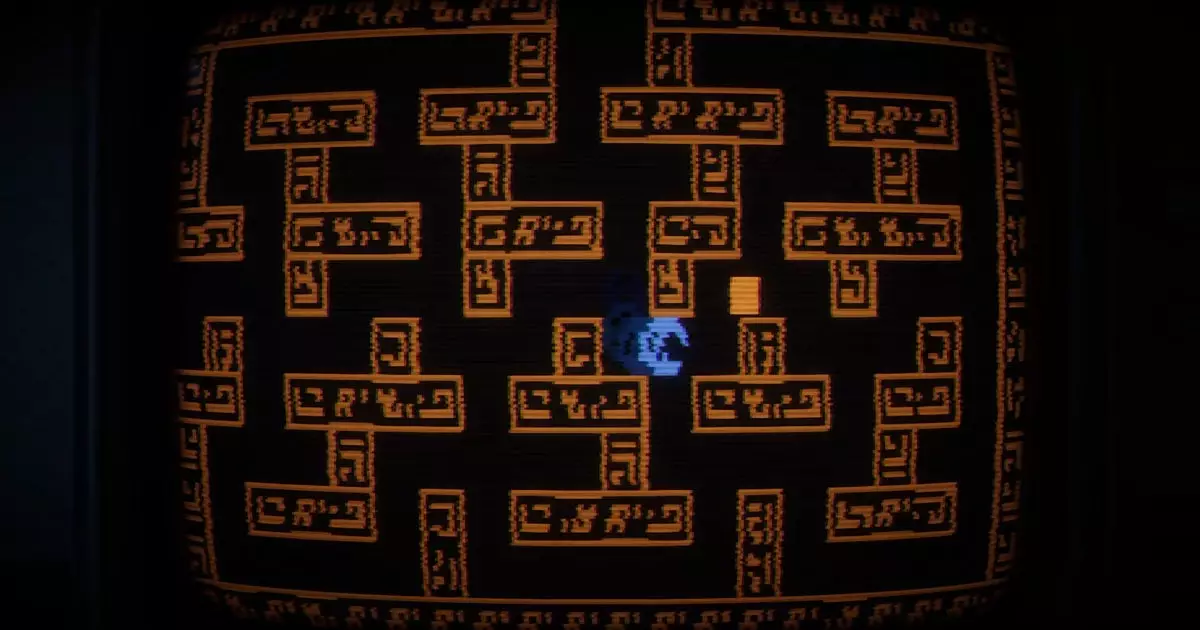In an age where horror games frequently tread the predictable path of jump scares and gruesome visuals, the newly launched game Tormenture seeks to carve out its niche by merging nostalgic elements from the past with spine-chilling gameplay. The game’s setting in the 1980s resonates not just as a backdrop, but as a thematic keystone that invigorates the horror experience. For many, the decade evokes a sense of nostalgia ambushed by a creeping dread, particularly as the memories of childhood toys—some delightful and others unsettling—collide with the ominous tones of the game.
Tormenture invites players into the story of a child who finds himself immersed in a fabled 8-bit game rumored to be harboring sinister spirits. The juxtaposition of a seemingly innocent childhood play and the malignant energy lurking within the game’s pixelated confines serves as a catalyst for exploring deeper psychological fears. Each gameplay session oscillates between navigating this digital labyrinth and confronting nightmarish elements grounded in the real world, namely the threatening ambiance of the player’s bedroom.
What makes Tormenture particularly engaging is its dual gameplay mechanic, shifting between a retro-style 8-bit environment and a 3D representation of the protagonist’s bedroom. The 8-bit game, far from being a mere homage to Atari classics, establishes its own rich narrative filled with intricate puzzles and hidden dangers. Encountering challenges such as baiting a zombie hand to activate a switch introduces a playful yet ominous quality to the gameplay, reflecting the irony often found in childhood games.
Contrastingly, the 3D aspect plunges players into a detailed world that, while steeped in nostalgic visuals and memorabilia, gradually intensifies in sinister overtones. It manages to capture the unsettling aesthetics often forged from real-world objects—like a childhood toy that, rather than invoking happiness, invokes dread. The players are reminded that even the most innocuous memories can carry unsettling undertones, particularly when viewed through the lens of adult fears and anxieties.
However, it is crucial to recognize the limitations that can accompany such ambitious design, particularly regarding technical performance. User reviews indicate that those who may not have access to high-performance gaming PCs—like the author who lamented the slow performance on their work laptop—could find their experience hindered. While the game ambitiously embraces high-fidelity graphics within a distinctive horror framework, it also demands hardware that many casual players may not possess.
Such performance issues could detract from the immersion that Tormenture strives to create. In an age where even retro-inspired games often exhibit demanding graphics, balancing nostalgia with modern technological expectations becomes a crucial element for developers to consider. Will players be left feeling excluded due to equipment limitations, or will the allure of the gameplay and storytelling be powerful enough to draw them in, regardless of technical hurdles?
The Nostalgic Horror Phenomenon
In contemplating the broader implications of Tormenture, one is reminded of horror’s natural fit within the landscape of retro gaming, especially during the Halloween season. The very essence of classic games, characterized by their simplistic graphics and pervasive darkness, cultivates a real sense of unease that contrasts sharply with today’s brightly lit, visually busy interfaces. As we navigate these labyrinths of nostalgia, the game serves as a vehicle for revisiting our childhood fears—those ancient terrors that can surface simply from the sight of an innocuous yet terrifying toy dragging across the floor.
By tapping into this world of shadowy pixels and palpable dread, Tormenture provides a refreshing take on horror gaming. It not only rekindles the charm of childhood gaming but also reinterprets those formative experiences through a lens of fear, ultimately extending an invitation to players to explore the unsettling corners of their own memories.
As the demo remains available to audiences eager for a blend of past and present, one can only hope that more games will continue to emerge, weaving together the nostalgia of yesteryear with contemporary fears, ultimately crafting unique narratives that resonate on multiple levels.

